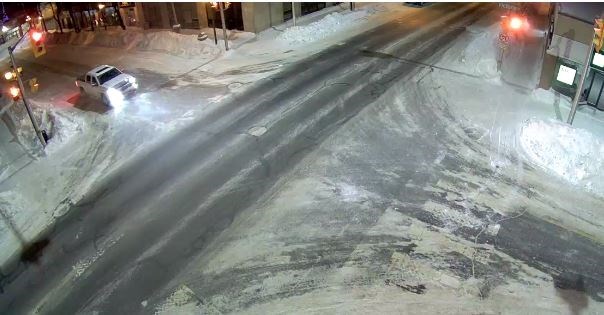THUNDER BAY – The city's eye-on-the-street video surveillance program will expand after unanimous approval from council on Monday, but the exact locations of future cameras have yet to be determined.
Matthew Pearson, manager of central support at City of Thunder Bay, said funding from this expansion came from the Solicitor General of Ontario's guns, gangs and violence reduction strategy.
The city report included 33 potential locations that council approved on Monday, but the plan would be to eventually add 12 to 16 new cameras "with the potential for additional approved locations to be considered in future budgets," Pearson said.
“These locations have been vetted (with) city officials, Thunder Bay Police, Tbaytel, and the eye-on-the-street advisory committee.”
The last step was to bring it to city council, he said.
“No additional financial implications are anticipated as we have worked hard to keep our operating impact within our existing budget."
This system is shared exclusively with Thunder Bay Police, Pearson said.
“I can tell you how many cars drove by a camera a day, without actually telling you what any one car looks like. Those are opportunities that exist with the hardware on the eye-on-the-street program.”
Anytime a location is attached to a building, a business or something that's very close, they will first talk to people, he said.
“We often need their cooperation. These things can be mapped into their buildings, usually a lot of them. We actually enter into police agreements with these individuals when things are more positioned at an intersection.
“We do not go and do a scan of the area, but rather we rely on this process . . . and just actually evaluating each location of whether or not that may be appropriate,” he said.
Pearson said there’s tremendous opportunity for things like stoplights and how long people are waiting in an intersection
“These are data collection points for municipalities and they're quickly realizing that they have use beyond security. I hesitate to go into a smart cities dialogue right now because I don’t want to drift away from what we're here about today.
Det. Insp. Jeremy Pearson with the Thunder Bay Police Service said the eye-on-the-street program can be extremely helpful in investigations.
“We're currently seeing a trend – and it's not an immediate and new trend – but we're seeing a trend towards a real dependence on surveillance video."
There's an expectation for it in the court system, he said.
“Absolutely, the greater availability there is, the more likely we are to expedite investigations and to have successful prosecutions."
Det. Insp. Pearson said there is true value to it.
“The police work will always remain the police work. We will always be interviewing witnesses and we'll always be analyzing physical evidence. We'll always be conducting those traditional police work undertakings.
“However, the availability of the best evidence of actual video evidence of what has occurred at a given location at a given time is invaluable,” he said.
The remainder of the 33 cameras not installed this year will be considered in future budgets.
